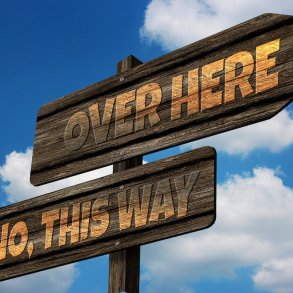By Lia Aurami for Enlivening Edge Magazine
The value of cultivating increased capacity for resilience is becoming increasingly obvious at every scale from individual through family through organization through city and on up even through various social movements to our species and planet.
What’s less obvious is that, as you’ll see in the exploration of this Editorial, the capacities that contribute to resilience are also the capacities that help bring an organization into next-stage consciousness, and help the people be successful at operating with self-management, wholeness, and evolutionary purpose.
What is “resilience?”
In a previous Editorial I suggested the HeartMath Institute’s expanded definition of resilience and its relationship to organizations. This Editorial is a sequel to that one, looking at the capacities making for resilience. As I name each, consider how those are also the capacities needed for an organization to embody next-stage consciousness.
The old concept of resilience has been “The ability to bounce back after stress” or Webster’s Dictionary definition “An ability to recover from or adjust easily to misfortune or change.”
HeartMath’s proposed new concept of resilience is “The capacity to prepare for, recover from and adapt in the face of stress, adversity, trauma, or tragedy.”
The difference between old and new concepts is two-fold. First, humans have the ability to increase their capacity for resilience, like a charge on one’s inner battery. A higher charge gives more energy to stay functional under stress, including thinking more clearly, perceiving more accurately, and making more effective decisions.
The second aspect of the new concept of resilience is that we can foresee, prepare for, and possibly mitigate if not avoid, serious challenges that would require us to draw on our inner battery. Or, we can adapt.
Resilience and setting priorities
At August’s 3rd Thursday Enlivening Edge Community Conversation we were together chewing on the value and capacity of setting priorities, and I got to thinking about the relationship of priorities and resilience. Obviously increased resilience can be a high priority for a person, organization, or other fractal of human life.
But what does the ability to set priorities contribute to having resilience? For example, in a situation where you’d want some resilience right away, can you quickly and easily distinguish important from urgent, and choose a next action? How much of a priority is it to you to foresee and prevent situations that would require resilience?
What other capacities and skills valuable at any scale are woven together to create the basket that is resilience–a basket that can hold any situation with strength? Each capacity is valuable on its own, for its other effects and results. Surely resilience is among those and, I suggest, the successful embodiment of next-stage consciousness in an organization, is also among those effects and results.
Resilience and connections/relationships
Might Enlivening Edge’s Evolutionary Purpose of increasing connections, of catalyzing relationships for the ultimate purpose of human and environmental thriving, also contribute to increased resilience? There’s the obvious matter of what’s called a “support network” ready to spring into action for comforting, for meaning-making, for perspective-offering, all of which would increase resilience.
Even faster would be a community pretty much tracking one another’s lives in real time, to offer practical assistance that would minimize upfront the stress or trauma for which resilience would be needed. Being resilient is naturally “collective” because it helps you help others who might be in stress but less resilient than you.
Other capacities that create resilience “money in the bank”
What other capacities or skills can you think of that you and your organization could start cultivating right now that would be “resilience money in the bank” available for withdrawal and use when desired, while also helping to create successful next-stage functioning?
Here are a couple. The single most obvious is where you start. The healthier you are, the more easily and quickly you will recover from a health challenge. The more friends you have, the more support you have for the loss of one. The higher you are to start with, the higher place you will likely be after you fall.
What about redundancy of essential functions? Nature is actually the ultimate blueprint for resilient systems, and she makes liberal use of redundancy. (In my view, we can never go wrong copying in our social systems what nature has evolved, and we can never go right if our social systems stray too far from nature’s designs.)
Here are some other capacities that contribute to your resilience, capacities that you have some control over. There might be systemic factors which diminish your control, related for example to psychological safety for experimenting and risk-taking.
Playfulness, sense of humor
Habit of learning, of being curious and of experimenting
Habit of personal growth, self-development
Creative attitude
Making lemonade out of life’s lemons (and then maybe even selling or sharing it)
Having a longterm perspective such as that life has cycles
Having a cosmology or religion that offers a meaning-making framework
Just enough and not too much doggedness and persistence
Self-care
Trust: in self, others, universe, process
Being open-minded, willing to consider alternative perspectives
A sense of personal empowerment; self-confidence
Bravery and courage
Having a purpose, passion and vision that allow for some stumbles and pivoting
Flexibility: mentally, emotionally, physically, and in circumstances of life
Being willing to take responsibility
Being willing to adapt, adopt, and adjust in service of your vision, mission, purpose, goals
Having inner reserves you can call on, due to sufficient self-care
Ability and motivation to find resources for your own inspiration, encouragement, and strength
Seeing yourself with others as the source of the future; having inner leadership
Having relationships with kind people; putting yourself into psychologically safe circumstances
Feeling a belonging in a supportive community
Confidence in your ability to contribute meaningfully to others
Feeling able to support and help others even while you yourself want support and help
General joy in life, enthusiasm about your life
All these also contribute to individual and group capacities needed to survive and thrive in a self-managed workplace. Without the positive capacities, we tend to resist being resilient and go to some other response to a stressor such as depression, addiction, giving up, or simmering in resentment.
What characteristics hinder resilience?
Unable to admit need help and to ask for it
Wanting to get back to the old comfort zone rather than experimenting and learning
Pinning everything on one person, company, plan, project
Being unwilling to take a good honest look at yourself or your situation
Giving up, settling, quiet quitting
Self-criticism, self-blame
Avoidance of risk or discomfort
Being stopped by fear of the unknown, fear of change
Resilience as growing even better
Resilience is not “like before” or “like it never happened” which is never possible. It has to include harvesting, learning, and coming out with greater capacity for living a thriving life. Lots of current emphasis on trauma-healing or prevention, is related because trauma ongoingly impairs resilience from when it begins.
Optimally, resilience means you come out the other side with greater compassion, greater humility, and greater self-confidence, and, surprising as it might seem, even greater resilience. “I did it before, I can do it again.” Resilience can be a self-enhancing capacity if it includes ways of keeping the situation from wearing you down, depleting your reserves.
For some hardy souls, resilience feels like “settling.” They are called to wrest triumph, not just resilience, from adversity. They want breakthroughs. They want the welding job to make the material joint stronger than before.
Above and beyond the capacities that make for resilience, what would be required for that level of harvesting adversity? The habit of gratitude and appreciation from looking for silver linings is one thing that can help breakthroughs. One thing I might suggest: feed your soul with stories of people who’ve done that! There are plenty available.
The value of resilience capacities right now
Even if the world is not falling apart, and resilience is not immediately needed for survival, having many of its component capacities feels good, contributes to our personal and organizational thriving, and really uplifts everyone. What capacities would you or your organization like to enhance, to make your woven basket able to hold more resilience-requiring experiences? You just might find your transition into next-stage operating, greatly enhanced.
P.S. Resilience is an increasingly hot topic these days. If you feel drawn to learn more, there are plenty of resources in the global conversation on the topic. Just start looking. Here are some reflections from Enlivening Edge Magazine’s library of 1280 articles.
Thank you Tony Zampella of the Bhāvanā Learning Group for evoking this editorial by mentioning the value of the previous one on this topic of resilience. And thank you Mireille Massue for a rich conversation that surfaced many of these ideas.

Lia Aurami: Within Enlivening Edge, I energize a variety of roles to express my sacred life mission: to amplify our human capacity for living, working, and relating within shared higher consciousness.
That optimizes the chances of success of transformative changes, by operationalizing collective and spiritual intelligence to help organizations be efficient and effective. I delight in creating and amplifying synergistic connections toward all that!





As you might guess, resilience in my book equals “We Spaces.” You certainly explain the importance og those places well!
Thanks Lia, I have been thinking about the term “resilience” for a while and your article helped me to see it more clearly.
I think changing the definition of resilience from something quite ho-hum “adjust easily to misfortune or change” to something that sounds scary and formidable “…stress, adversity, trauma or tragedy” is part of the new world order’s plan to normalise stress, adversity, trauma and tragedy in our lives. And the fact that everyone is so interested in “resilience” shows how well their societal programming is working. We must stop operating from a place of fear and risk mitigation to one of love and creation. Start focussing on what we do want and not what we don’t want.
It is true that when we have more money in the bank or excess resources tucked away we are better able to weather the storms. But why do we need storms? It’s the lack of resources that causes stress, adversity, trauma and tragedy – for individuals and for organisations. Why do we have a lack of resources? Because our current world system is designed that way.
Keely, I am so happy you made this point. I totally agree!!! Perhaps I was too subtle in making one of my main points: that the qualities which help us deal with what we don’t want are also the same qualities that help us thrive and succeed, bringing us more of what we do want.
I totally agree that focus on what we don’t want tends to give us more of that, and focus on what we do want, tends to give us more of THAT.
Let us make the changes you suggest! I passionately support that!!
Gratefully,
Lia